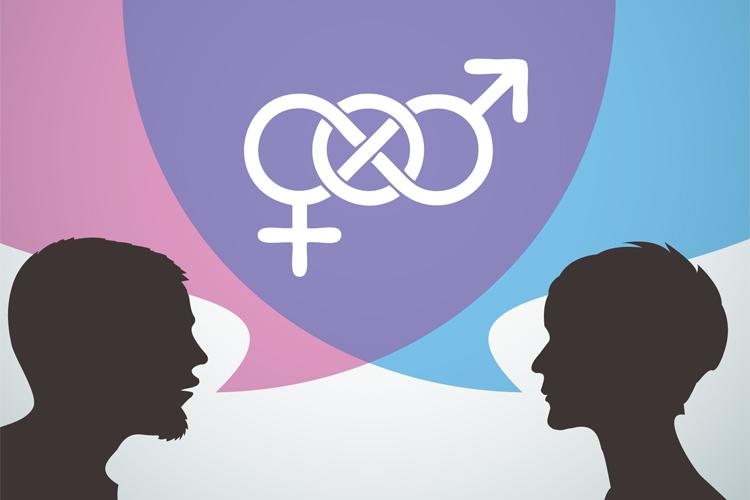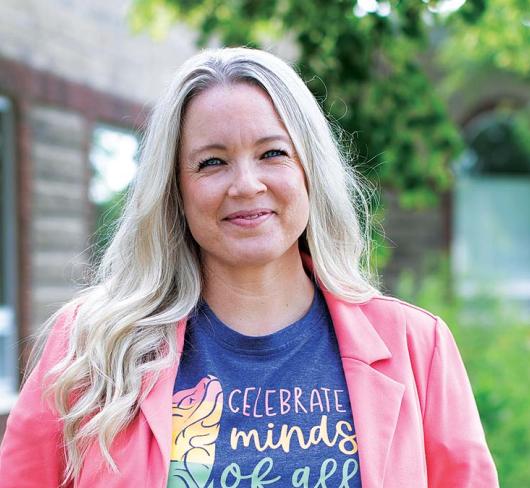
Gender Neutral Language: An Activity For Day Of Pink Or Any Day
We make a lot of assumptions about people based on their appearance within a few seconds of meeting them.
We presume a person’s age, cultural background, socio-economic status, sexual orientation and gender, amongst other things. As humans, we are born classifiers. We learn the ways of the world we inhabit by ordering and classifying. Science and language provide many examples of this. But this instinct of ours becomes a problem when we become stuck, when we become confined and restricted by our systems of classification.
Often unknowingly, our language is one of the systems that fail us. Alongside a societal expectation that one must identify as male or female, our pronoun structure reinforces the systematic marginalization of gender independent people by forcing each to self-identify on only one end of the gender spectrum. Even worse, it forces each of us to make verbal assumptions about the gender of others when referring to them.
Our language has not yet caught up to the understanding that gender is not a binary, but a spectrum, with each person possessing some “masculine” qualities and some “feminine” qualities in varying and sometimes shifting degrees. Which traits are considered masculine and which feminine is a social construct that shifts over time and across cultures. For some, it is easy to fit into the societally accepted role of being at either end of the binary and even easier when that fit matches their biological sex at birth (cisgendered). For some, however, it’s not so simple. Societal expectations and language can cause huge problems for anyone whose gender identity falls anywhere in the middle of the spectrum or is fluid instead of static – single-gendered bathrooms, for example.
There have been several incarnations of gender-neutral pronouns (i.e. ze/zir/zirs/zirself, ve/ver/vis/verself and others), though there has been a lack of agreement among supporters of the idea. Others have suggested that we adopt the plural pronoun “they” for singular use. “They” already has a historical track record of being used in the singular as well as its plural form. For this activity we will use the singular form of the “they” pronoun.
On this year’s Day of Pink (or on any given day in your classroom) consider challenging your class to spend at least one full day erasing the forced gender binary from all spoken and written speech by using genderneutral language. Start the day admitting, as a group, “Yes, we will probably slip up and yes, we might fumble around it.” Know that it is natural and forgivable as the current language is ingrained in us and old habits die hard. But by forcing ourselves to use “they” instead of gendered pronouns, we eliminate from our language the systematic marginalization of gender independent people. We promote an awareness of the ways we unknowingly force ourselves and others into socially constructed gender boxes and we stop making assumptions about people based on their physical presentation. We begin retraining our habits, therefore our minds, and therefore social consciousness.
Putting it Into Practice
What does this look like?
It’s simple: Use “they” in place of “he” and “she.” Use “theirs” in place of “his” and “hers.” Use “person” in place of “girl,” “boy,” “woman,” and “man.”
For example:
Instead of saying: “Give Jimmy back HIS book, HE was reading it.”
Say: “Give Jimmy back THEIR book. THEY were reading it.”
Instead of saying: “Helen is such a smart WOMAN. I really admire HER.”
Say: “Helen is such a smart PERSON. I really admire THEM.”
Instead of saying: “Good evening LADIES and GENTLEMEN!”
Say: “Good evening FOLKS!”
Instead of saying: “My WIFE works hard at HER job.”
Say: “My PARTNER works hard at THEIR job.”
Instead of saying: “My FATHER is a great dancer.”
Say: “My PARENT is a great dancer.”
If you aren’t used to speaking like this, it might seem odd at first, but so did saying Ms. before that was acceptable. It might seem incorrect grammatically, but it’s not. And even if it is, let’s not forget that language changes and adapts over time. We need it to. Look at the way we’ve reclaimed words and made derogatory words acceptable, like the word queer, for example.
And if you’re thinking, “But why can’t I talk about my father as my father? That’s what he is.” What they are is your parent. It’s unnecessary to disclose their gender just to tell someone that your parent is a great dancer. This is not to negate that some people identify as he or she, but to acknowledge that we shouldn’t make assumptions. You can always politely ask what a person’s preferred pronoun is.
According to the Ontario Human Rights Commission, “Every person has the right to define their own gender identity.” The more we acknowledge that gender expression exists on a spectrum instead of a binary, the more comfortable everyone will feel in their own skin.
So, try breaking out of the language barrier. See what your students learn. See what you learn. Who knows? Perhaps this exercise will encourage you and your students to release that faulty lexicon for good.
Melissa Major is a member of the Toronto Occasional Teacher Local.

